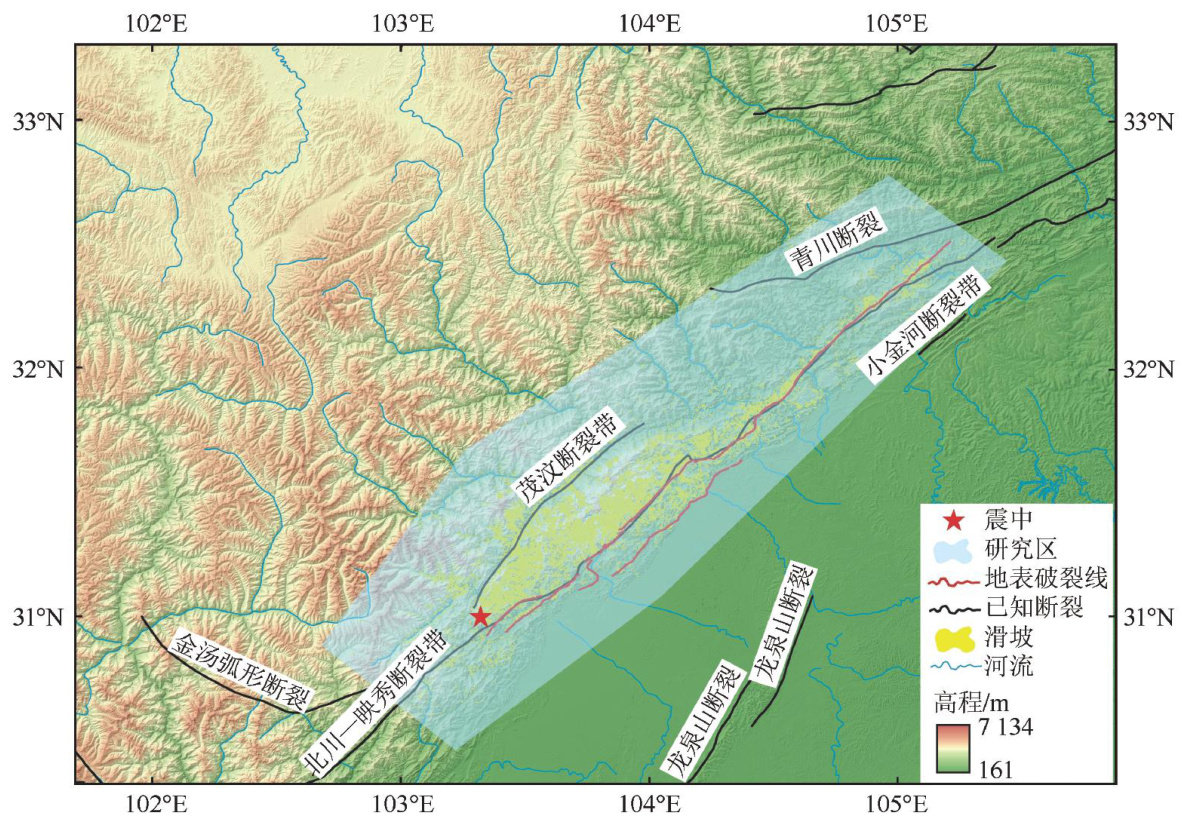同震位移结合地形因素对滑坡分布的影响
——以2008年汶川 Ms8.0 地震为例


打开文本图片集
中图分类号:P642.22 文献标志码:A 文章编号:1000-0844(2025)05—1109—12
Abstract: Geographic information system data are used with a finite fault model to compute the surface Coulomb stress changes and coseismic displacements caused by the 2oo8 Wenchuan Ms8.0 (204号 earthquake. Topographic factors,including elevation, slope gradient,and aspect angle,are integrated to explore the distribution patterns of coseismic landslides. Based on the results,coseismic landslides are concentrated in areas with steeper slopes and greater topographic relief, and the landslide probability is maximized at a specific elevation range and aspect angle. Areas with elevated Coulomb stress are more prone to coseismic landslides, and regions with large coseismic displacements generally exhibit higher landslide counts. For a given coseismic displacement,areas with steeper slopes and displacement in the horizontal direction are more prone to coseismic landslides.This study demonstrates that post-earthquake surface displacements can serve as a reference for identifying zones at risk of coseismic landslides to mitigate losses of life and property.
Keywords: coseismic landslide;Coulomb stress change; coseismic displacement field; landslide susceptibility;spatial distribution
0 引言
山区地震引发的滑坡往往会造成重大的人员伤亡和经济损失。(剩余14483字)